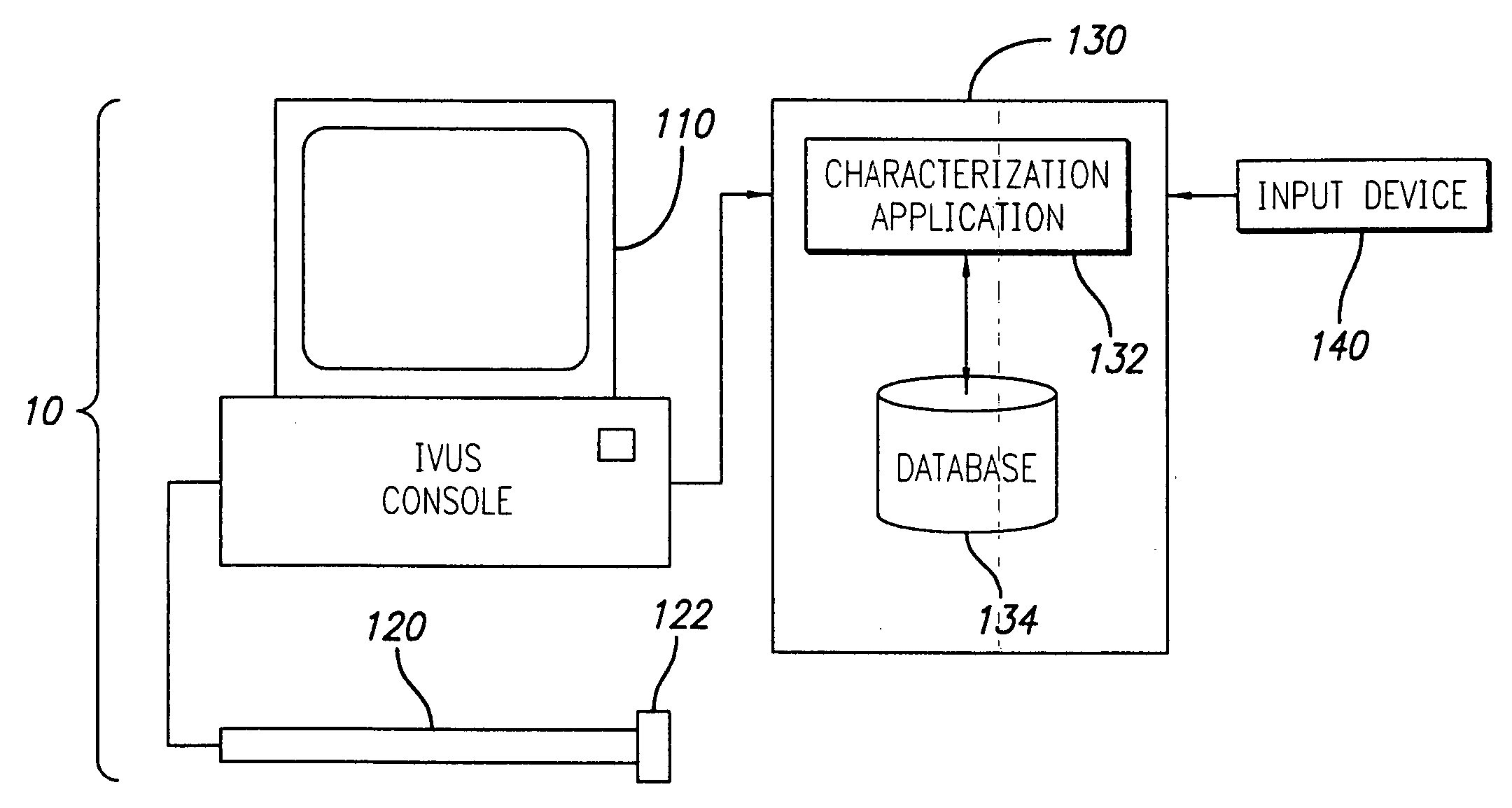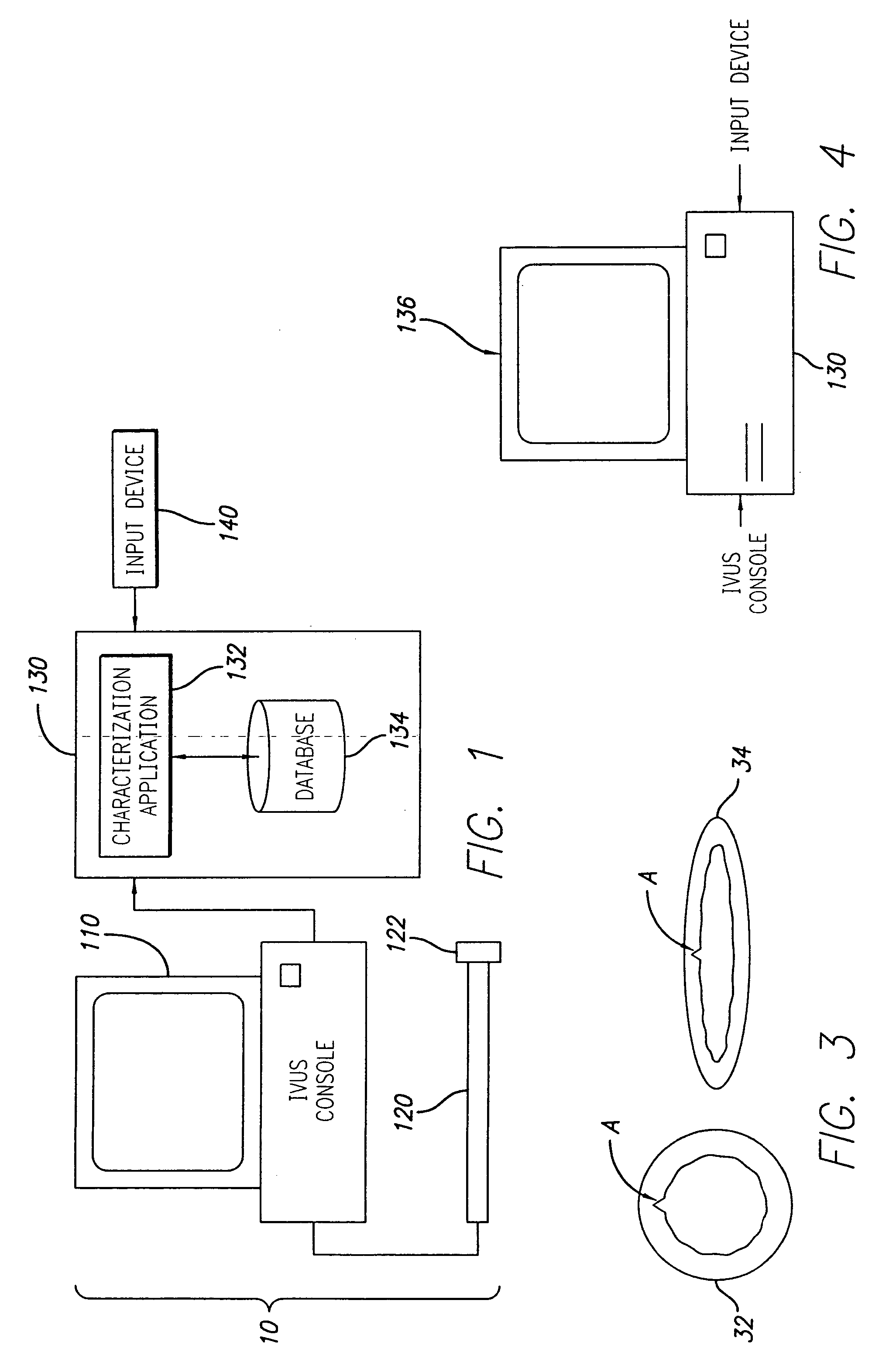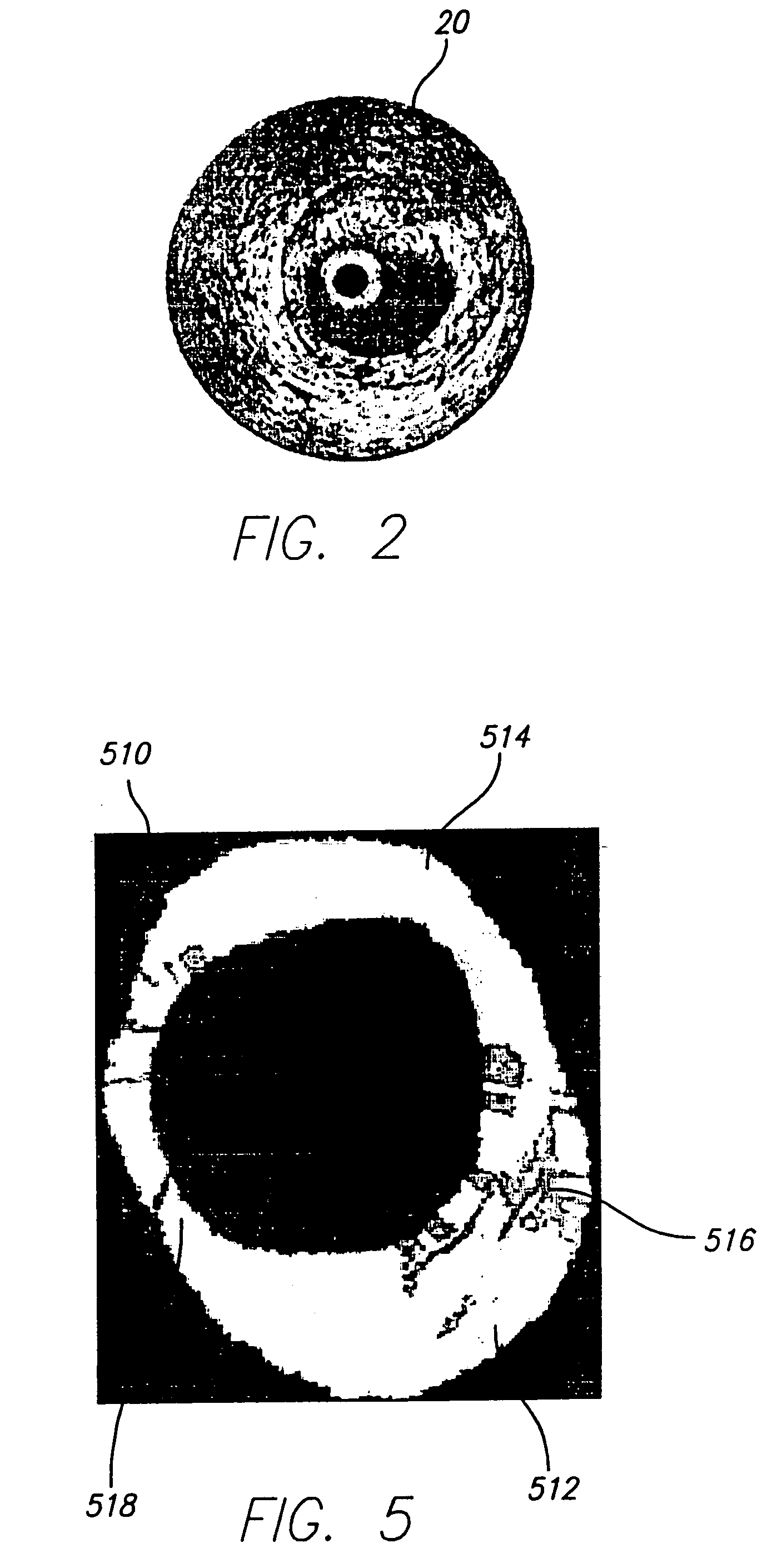System and method of characterizing vascular tissue
a vascular tissue and system technology, applied in the field of vascular tissue, can solve the problems of loss of image resolution, inaccurate evaluation of a vessel and its plaque content, and errors in analysis if the screen setting is changed, and achieve the effect of removing histological preparation artifacts
- Summary
- Abstract
- Description
- Claims
- Application Information
AI Technical Summary
Benefits of technology
Problems solved by technology
Method used
Image
Examples
first embodiment
[0022]FIG. 1 illustrates a tissue-characterization system 10 operating in accordance with the present invention. In this embodiment, an intra-vascular ultrasound (IVUS) console 110 is electrically connected to an IVUS catheter 120 and used to acquire RF backscattered data (i.e., IVUS data) from a blood vessel. Specifically, a transducer 122 is attached to the end of the catheter 120 and is carefully maneuvered through a patient's body to a point of interest. The transducer is then pulsed to acquire echoes or backscattered signals reflected from the tissue of the vascular object. Because different types and densities of tissue absorb and reflect the ultrasound pulse differently, the reflected data (i.e., IVUS data) can be used to image the vascular object. In other words, the IVUS data can be used (e.g., by the IVUS console 110) to create an IVUS image. An exemplary IVUS image 20 is provided in FIG. 2, where the light and dark regions indicate different tissue types and / or densities....
second embodiment
[0034] Accordingly, in the present invention, the characterization application is adapted to receive IVUS data, determine parameters related thereto, and use the parameters stored in the database (i.e., histology data) to identify tissue type(s) or characterization(s) thereof. Specifically, with reference to FIG. 1, the characterization application 132 is adapted to receive IVUS data from the IVUS console 110. The characterization application 132 is then adapted to identify at least one parameter associated (either directly or indirectly) with the IVUS data. It should be appreciated that the IVUS data may either be received in real-time (e.g., while the patient is in the operating room) or after a period of delay (e.g., via CD-ROM, etc.). It should further be appreciated that the identified parameters should be related (generally) to the stored parameters. Thus, for example, an estimated Y intercept parameter should be identified if data related to a signal's estimated Y intercept i...
PUM
 Login to View More
Login to View More Abstract
Description
Claims
Application Information
 Login to View More
Login to View More - R&D
- Intellectual Property
- Life Sciences
- Materials
- Tech Scout
- Unparalleled Data Quality
- Higher Quality Content
- 60% Fewer Hallucinations
Browse by: Latest US Patents, China's latest patents, Technical Efficacy Thesaurus, Application Domain, Technology Topic, Popular Technical Reports.
© 2025 PatSnap. All rights reserved.Legal|Privacy policy|Modern Slavery Act Transparency Statement|Sitemap|About US| Contact US: help@patsnap.com



